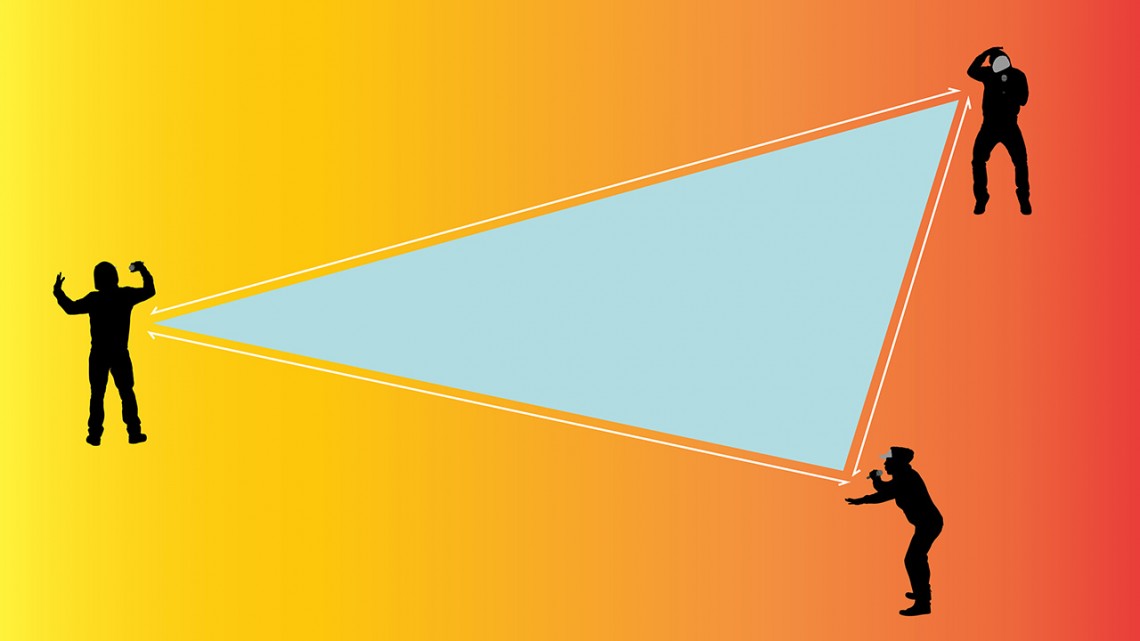
Predicting future combos, from rap songs to pharmaceuticals
By Melanie Lefkowitz
In 2013, rap artists Gucci Mane and Young Thug collaborated on the song “Anything” on a Mane mixtape, and both later appeared on Waka Flocka Flame’s track “Fell.”
In 2014, Young Thug twice featured on Travis Scott’s mixtape, “Days Before Rodeo,” and both Mane and Scott appeared on Kanye West’s 2016 ensemble track “Champions.”
These pair-ups made it highly likely that all three artists would collaborate with each other, according to Cornell researchers and colleagues who developed an algorithm to predict which groups are likely to work together in the future based on their past partnerships. And sure enough, in 2016 Scott and Mane appeared on Young Thug’s track “Floyd Mayweather.”
The rap collaboration was among the examples explored in the paper “Simplicial Closure and Higher-Order Link Prediction,” published Nov. 27 in Proceedings of the National Academy of Sciences.
The researchers created and studied 19 data sets across a wide range of areas, including rap artists, co-authors of academic papers, components of new pharmaceuticals, tags used to label topics discussed in online chat rooms, Congressional members who co-wrote bills or served together on committees, and illicit drug combinations that preceded emergency room visits.
“We asked, ‘Can we predict which new group interactions will appear in the future given data up to the present?’” said co-author Austin Benson, assistant professor of computer science. “The application might be which new teams are going to form at a company, or which new groups of friends are going to form, or which new substances will go into combination to form a drug. People had done this with two things at a time, but they hadn’t really done this with groups before.”
Other contributors were Jon Kleinberg, the Tisch University Professor of Computer Science; Cornell computer science doctoral student Rediet Abebe; and Michael T. Schaub and Ali Jadbabaie of the Massachusetts Institute of Technology.
They performed their analysis by looking at which people or entities combined in pairs, and found that when three entities cooperated with each other in pairs – an open triangle – it became highly likely that all three would come together into a group, or a closed triangle. The likelihood of a closed triangle rose as the number of collaborations between each of the pairs increased.
For example, the researchers examined HIV anti-retroviral drugs, which may be composed of different types of gene inhibitors. They identified an open triangle between two types of gene inhibitors, and a breast cancer resistance protein inhibitor. Evotaz, an HIV combination drug using all three medications, was introduced six years after the “open triangle” formed.
“This is the type of group interaction we’re hoping to predict,” Benson said.
There are several other potential applications for a method that predicts group collaborations, Benson said. It could be useful in predicting friend and contact networks, and could be used by a social network like Facebook to suggest members for a group or invitees to an event. Likely predictions of co-authors could be used to suggest collaborations among researchers. Predictions about combinations of illegal drugs and prescription medication could help hospital staff prepare for patients facing adverse effects.
The researchers checked the accuracy of their predictions using an algorithm that compared them retroactively against actual interactions and collaborations. They tested around 20 different models, and found that the most effective combined several relatively uncomplicated computations to predict the likelihood of closed triangles.
“Some really simple methods worked, which is not always the case in our field,” Benson said.
The research was supported by the National Science Foundation and by a Simons Investigator Award.
Media Contact
Get Cornell news delivered right to your inbox.
Subscribe
